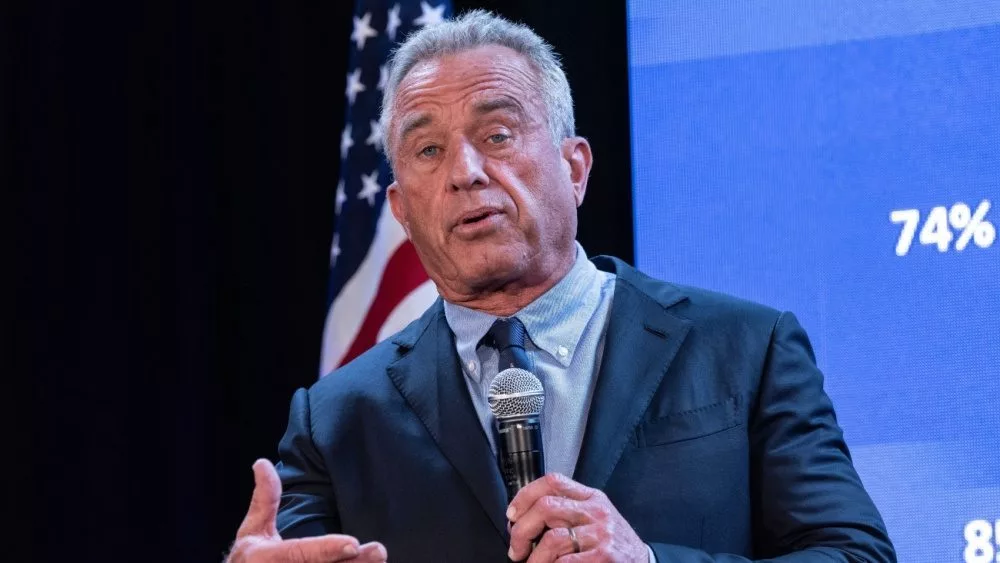SELMA, Ala. (AP) — Rescuers raced Friday to find any survivors trapped in debris after tornadoes barreled across parts of the South in a system that killed at least nine people in Alabama and Georgia and inflicted heavy damage on Selma, a flashpoint of the civil rights movement.
A better picture of the damage was expected to emerge later in the day as authorities surveyed the scarred landscape. At least 35 possible tornado touchdowns were reported across several states, according to the Federal Emergency Management Agency.
The National Weather Service, which was working to confirm the twisters, said suspected tornado damage was reported in at least 14 counties in Alabama and five in Georgia.
Tens of thousands of homes and businesses were without power in both states, according to PowerOutage.us, which tracks outages nationwide.
One tornado cut a 20-mile (32-kilometer) path across two rural Alabama communities Thursday before the worst of the weather moved across Georgia on a track south of Atlanta.
Searchers in Autauga County found a body after daybreak near a home that had been badly damaged, authorities said. That death brought the toll to seven in the county about 40 miles (64 kilometers) northeast of Selma.
At least 12 people were injured severely enough to be taken to hospitals, Ernie Baggett, Autauga County’s emergency management director, said as crews cut through downed trees looking for survivors.
He said about 40 homes were destroyed or seriously damaged, including several mobile homes that were launched into the air.
“They weren’t just blown over,” he said. “They were blown a distance.”
In Selma, a city etched in the history of the civil rights movement, the city council met on a sidewalk using lights from cellphones and declared a state of emergency.
Georgia Gov. Brian Kemp said Friday that a state Department of Transportation worker was killed while responding to storm damage. He gave no further details.
Another death occurred in central Georgia’s Butts County, where a passenger died when a tree fell on a vehicle, the coroner said. The storm appeared to have knocked a freight train off its tracks in the same county, officials said.
The storm struck Griffin, Georgia, south of Atlanta, as mourners gathered for a wake at Peterson’s Funeral Home. About 20 people scrambled for shelter in a restroom and an office when a loud boom sounded as a large tree fell on the building.
“When we came out, we were in total shock,” said Sha-Meeka Peterson-Smith, the funeral home’s chief operational officer. “We heard everything, but didn’t know how bad it actually was.”
The uprooted tree crashed straight through the front of the building, she said, destroying a viewing room, a lounge and a front office. No one was hurt.
Officials in Griffin told local news outlets that multiple people had been trapped inside an apartment complex after trees fell on it. A Hobby Lobby store lost part of its roof, and firefighters cut loose a man who had been pinned for hours under a tree that fell on his house.
The tornado that hit Selma cut a wide path through the downtown area, where brick buildings collapsed, oak trees were uprooted, cars were tossed onto their sides and power lines were left dangling.
Plumes of thick, black smoke from a fire rose over the city. It wasn’t clear whether the storm caused the blaze.
Selma Mayor James Perkins said no fatalities were reported, but several people were seriously injured. Officials hoped to get an aerial view of the city Friday morning.
“We have a lot of downed power lines,” he said. “There is a lot of danger on the streets.”
Mattie Moore was among Selma residents who picked up boxed meals offered by a charity downtown.
“Thank God that we’re here. It’s like something you see on TV,” Moore said of the destruction.
A city of about 18,000 people, Selma is about 50 miles (80 kilometers) west of Montgomery, the Alabama capital. It was a flashpoint of the civil rights movement where state troopers viciously attacked Black people who marched non-violently for voting rights across the Edmund Pettus Bridge on March 7, 1965.
Malesha McVay took video of the giant twister, which turned black as it swept away home after home.
“It would hit a house, and black smoke would swirl up,” she said. “It was very terrifying.”
Three factors — a natural La Nina weather cycle, warming of the Gulf of Mexico likely related to climate change and a decades-long eastward shift of tornado activity — combined to make Thursday’s tornado outbreak unusual and damaging, said Victor Gensini, a meteorology professor at Northern Illinois University who studies tornado trends.
La Nina, a cooling of parts of the Pacific that changes weather worldwide, was a factor in making a wavy jet stream that brought a cold front through, Gensini said. But that’s not enough for a tornado outbreak. The other ingredient is moisture.
Normally the air in the Southeast is fairly dry this time of year, but the dew point was twice the normal level, likely because of unusually warm water in the Gulf of Mexico, which is likely influenced by climate change, Gensini said. That moisture hit the cold front, adding up to killer storms.
In Kentucky, the weather service confirmed that an EF-1 tornado struck Mercer County and said crews were surveying damage in a handful of other counties.he funeral home’s chief operational officer. “We heard everything, but didn’t know how bad it actually was.”
The uprooted tree crashed straight through the front of the building, she said, destroying a viewing room, a lounge and a front office.
No one was hurt.
Officials in Griffin told local news outlets that multiple people had been trapped inside an apartment complex after trees fell on it.
A Hobby Lobby store lost part of its roof, and firefighters cut loose a man who had been pinned for hours under a tree that fell on his house.
The city imposed a curfew from 10 p.m. Thursday to 6 a.m. Friday.
Nationwide, the weather service issued more than 40 separate tornado reports on Thursday, and Mississippi, Alabama, Georgia, Tennessee, Kentucky, South Carolina and North Carolina all had tornado warnings for a time.
The tornado reports were not yet confirmed and some could be classified as wind damage once assessments are done.
The tornado that hit Selma cut a wide path through the downtown area, where brick buildings collapsed, oak trees were uprooted, cars were on their side and power lines were left dangling.
Plumes of thick, black smoke from a fire rose over the city; whether the storm caused the blaze wasn’t immediately known.
Selma Mayor James Perkins said no fatalities have been reported, but several people were seriously injured. Officials hoped to get an aerial view of the city Friday morning.
“We have a lot of downed power lines,” he said. “There is a lot of danger on the streets.”
Mattie Moore was among Selma residents who picked up boxed meals offered by a charity downtown.
“Thank God that we’re here. It’s like something you see on TV,” Moore said of the destruction.
A city of about 18,000 people, Selma is about 50 miles (80 kilometers) west of Montgomery, the Alabama capital.
It was a flashpoint of the civil rights movement where state troopers viciously attacked Black people who marched non-violently for voting rights across the Edmund Pettus Bridge on March 7, 1965.
Malesha McVay took video of the giant twister, which would turn black as it swept away home after home.
“It would hit a house, and black smoke would swirl up,” she said. “It was very terrifying.”
Three factors — a natural La Nina weather cycle, warming of the Gulf of Mexico likely related to climate change and a decades-long eastward shift of tornado activity — combined to make Thursday’s tornado outbreak unusual and damaging, said Victor Gensini, a meteorology professor at Northern Illinois University who studies tornado trends.
La Nina, a cooling of parts of the Pacific that changes weather worldwide, was a factor in making a wavy jet stream that brought a cold front through, Gensini said. But that’s not enough for a tornado outbreak.
The other ingredient is moisture.
Normally the air in the Southeast is fairly dry this time of year but the dew point was twice normal, likely because of unusually warm water in the Gulf of Mexico, which is likely influenced by climate change, Gensini said.
That moisture hit the cold front, adding up to killer storms.
About 22,000 customers were without power in Alabama early Friday, according to PowerOutage.us, which tracks outages nationwide.
In Georgia, about 23,000 customers remained without electricity after the storm system carved a path across a tier of counties just south of Atlanta.
School was canceled for 90,000 students in at least six Georgia counties on Friday.
In Kentucky, the weather service confirmed that an EF-1 tornado struck Mercer County and said crews were surveying damage in a handful of other counties.








